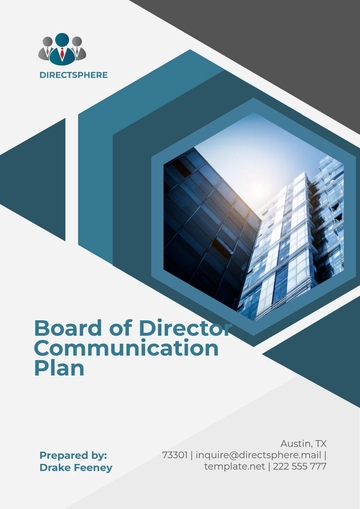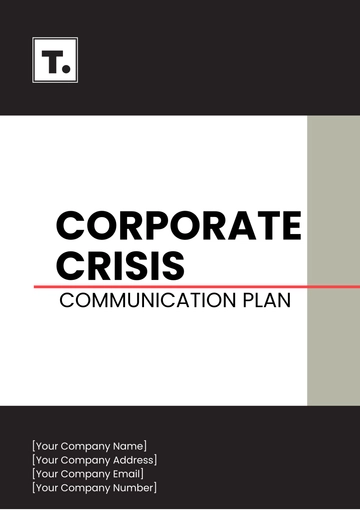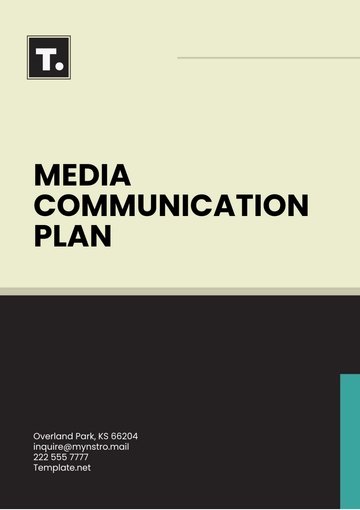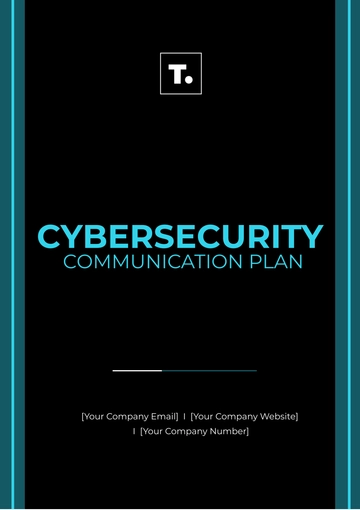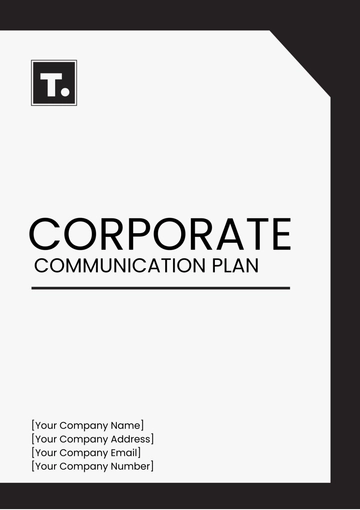Free School Communication Plan

Written by: [Your Name]
I. Introduction
As the School Committee, we must establish a robust communication plan that serves as the cornerstone of our efforts to enhance collaboration and transparency within our educational institution. This plan aims to outline our strategies for effective communication among stakeholders, ensuring that all members of our school community are informed, engaged, and supported.
II. Goals and Objectives
Our overarching goals are centered around fostering a sense of belonging, facilitating meaningful engagement, and promoting academic success within our school community. Our specific objectives include:
A. Goal 1: Foster Parent-Teacher Collaboration
Objective: Increase parent participation in school activities by 20% within the academic year through regular communication and involvement initiatives.
B. Goal 2: Enhance Student Engagement
Objective: Implement monthly student surveys to gather feedback on school events, curriculum, and extracurricular activities to tailor our offerings to student preferences.
C. Goal 3: Improve Staff Coordination
Objective: Streamline communication channels to reduce response times to staff inquiries by 30%, thereby improving efficiency and collaboration among faculty and staff members.
III. Stakeholder Analysis
Understanding our stakeholders' needs and preferences is essential for tailoring our communication strategies effectively. Our stakeholders include:
Students: Our primary focus is on providing them with clear and accessible information regarding academic requirements, extracurricular activities, and support services.
Parents: We recognize the importance of keeping parents informed about their child's progress, school events, and policy changes to foster a strong home-school partnership.
Teachers and Staff: Clear communication channels are vital for disseminating important updates, facilitating collaboration, and addressing concerns among our dedicated faculty and staff members.
Administrators: Transparent communication with administrators is essential for aligning our communication efforts with the school's overall objectives and ensuring effective decision-making.
Community Members: Building positive relationships with the local community through outreach efforts and public events strengthens our school's reputation and fosters community support.
IV. Communication Channels
We will utilize a diverse range of communication channels to reach our stakeholders effectively, including:
Email: Our primary channel for official announcements, newsletters, and individual correspondence, ensuring timely and direct communication.
School Website: A centralized platform for sharing comprehensive information about school policies, events, curriculum updates, and resources accessible to all stakeholders.
Social Media: Platforms like Facebook and Twitter will be utilized to share updates, and event highlights, and engage with our school community in real-time.
Parent-Teacher Meetings: Regular in-person meetings will be scheduled to facilitate open communication, address concerns, and strengthen the home-school partnership.
Mobile Apps: We will explore the use of mobile apps to provide convenient access to school information, receive push notifications, and facilitate communication between stakeholders.
V. Messaging Guidelines
Our messaging will be guided by principles of clarity, transparency, and inclusivity to ensure that all stakeholders receive relevant and understandable information. Key guidelines include:
Use clear and concise language to convey information effectively.
Maintain a positive and professional tone in all communications.
Provide relevant details such as dates, times, and locations to facilitate understanding and engagement.
Personalize messages whenever possible to demonstrate empathy and relevance to the recipient.
VI. Roles and Responsibilities
To ensure the effective implementation of our communication plan, we will assign specific roles and responsibilities to members of our school committee, faculty, and staff. Responsibilities include:
Administrators: Oversee the implementation of the School Communication Plan and provide guidance to staff members.
Teachers: Act as key communicators, sharing important information with students, parents, and colleagues and facilitating feedback collection.
Staff Members: Stay informed about school-wide announcements and actively participate in communication initiatives to support the school's objectives.
Communication Specialists: Develop content for newsletters, social media posts, and other communication materials, ensuring consistency and relevance.
VII. Timeline and Schedule
We have developed a detailed timeline and schedule for planned communications and major events throughout the academic year, ensuring proactive engagement with stakeholders. Key milestones include:
Monthly Newsletter: Distributed to parents via email on the first Friday of each month, providing updates on school events, achievements, and important announcements.
Weekly Social Media Updates: Posted on Facebook and Twitter every Wednesday to keep the community informed about school activities and initiatives.
Quarterly Parent-Teacher Meetings: Scheduled in advance to allow parents and teachers to discuss student progress, and academic goals, and address any concerns.
Biweekly Staff Meetings: Held every other Monday to provide updates on school policies, curriculum changes, and upcoming events, fostering collaboration and alignment among staff members.
VIII. Evaluation and Feedback
Continuous evaluation and feedback are essential for assessing the effectiveness of our communication strategies and identifying areas for improvement. Our evaluation methods include:
Quarterly Surveys: Conducted to gather feedback from stakeholders on the effectiveness of communication strategies and identify areas for improvement.
Analysis of Communication Metrics: Regularly analyze communication metrics such as email open rates, website traffic, and social media engagement to assess the reach and impact of our communication efforts.
Communication Team Meetings: Hold regular meetings with the communication team to discuss feedback, identify trends, and develop strategies for enhancing our School Communication Plan.
- 100% Customizable, free editor
- Access 1 Million+ Templates, photo’s & graphics
- Download or share as a template
- Click and replace photos, graphics, text, backgrounds
- Resize, crop, AI write & more
- Access advanced editor
Enhance and Discover the School Communication Plan Template from Template.net. Crafted with educators in mind, this editable and customizable tool simplifies communication strategies. Tailor it effortlessly to your institution's needs using our Ai Editor Tool. Streamline your communication efforts today with this versatile resource, exclusively from Template.net. Elevate your school's messaging with ease.



